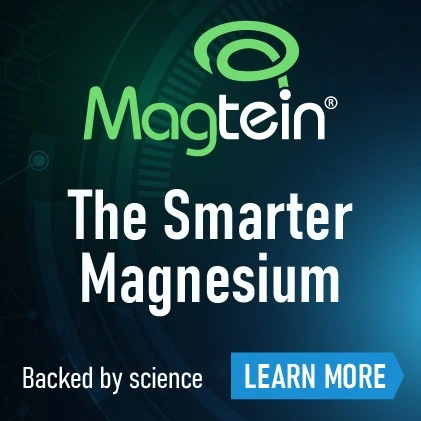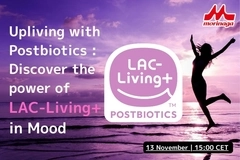Plant-based eating gains ground as active nutrition embraces sustainability
Key takeaways
- Manufacturers and consumers are turning to plant-based proteins as sustainable, lactose-free, and locally sourced alternatives to dairy.
- Advances in processing, chicory root fiber synergies, and ingredient innovation are helping overcome taste, texture, and functionality barriers in plant-based nutrition.
- From protecting endangered botanicals to implementing independent collagen certifications, the industry is prioritizing transparency, supply resilience, and ecological responsibility.
The active nutrition market is expanding to include regular consumers and athletes. With more environmentally conscious consumers demanding high-quality, efficacy, and convenient supplement formats, manufacturers are developing solutions to meet these demands.
Nutrition Insight explores how industry is developing next-gen, sustainable, plant-based active nutrition with Bioiberica, Cosun Protein, Gnosis by Lesaffre, HTBA, Lactalis Ingredients, Sensus, and Sirio Europe.
Previously, with these companies, as well as Balchem Human Nutrition and Health and FrieslandCampina Ingredients, we investigated how fibers, vitamins, minerals, and mobility-supporting ingredients are increasingly important in active nutrition consumer demands, next to trending protein. The specialists also explained how scientific studies back their star ingredients.
Sustainability gives rise to plant-based proteins
Ricky van Beers, technical sales manager at Cosun Protein, touts dairy proteins as the standard in active nutrition with their quality and benefits. However, he cautions that the market is facing more challenges.
“Prices for dairy ingredients have become more volatile, and concerns around environmental impact and resource use are leading both manufacturers and consumers to explore alternatives. Additionally, dairy is not suitable for everyone, with lactose intolerance and allergen sensitivity affecting a significant portion of the population.”

“In this context, plant-based proteins are gaining traction as a future-proof alternative,” says Van Beers. “They offer several advantages: they are naturally lactose-free, often more sustainable in terms of land and water use, and can be produced locally with greater supply chain flexibility,” he notes.
 Plant-based proteins are gaining traction as sustainable, inclusive options in active nutrition.Modern plant-based isolates and blends have been shown to provide sufficient essential amino acids to support muscles. This is especially true when products are formulated with digestibility and amino acid completeness in mind.
Plant-based proteins are gaining traction as sustainable, inclusive options in active nutrition.Modern plant-based isolates and blends have been shown to provide sufficient essential amino acids to support muscles. This is especially true when products are formulated with digestibility and amino acid completeness in mind.
“Advances in processing have also improved taste and functionality, making these proteins increasingly viable in both everyday foods and performance-oriented products,” he details.
“As the demand for inclusive, affordable, and environmentally responsible nutrition grows, plant-based proteins are well-positioned to meet the evolving needs of active consumers. Not by replacing dairy entirely, but by expanding the range of high-quality options available,” Van Beers explains.
Meanwhile, Elodie Macariou, senior product manager at Lactalis Ingredients, adds: “Maintaining clean labels while ensuring functionality is a key challenge. Our native proteins, like Pronativ, are minimally processed and transparent. They are designed for functional food manufacturers who want an efficient, transparent, natural product.”
“Sustainability is also a big challenge in active nutrition. By evolving our supply chain and valorizing every milk fraction, we aim to offer high-performance ingredients with a lighter environmental footprint.”
Taste and texture hurdles
Eszter Heijnen, commercial manager at Sensus, discusses how energy drinks and protein shakes are the key formats in active nutrition. However, their taste and texture remain a challenge, especially in plant-based alternatives, as consumers want a clean, natural taste and a creamy mouthfeel, similar to dairy counterparts.
“Chicory root fiber offers a unique solution to this challenge. It not only replaces sugar to reduce calorie content but also enhances texture and mouthfeel with its naturally pleasant, slightly sweet taste.”
“From a nutritional perspective, combining Frutafit or Frutalose chicory root fiber with plant-based proteins — such as Tendra fava bean protein isolate — creates a powerful synergy. Both ingredients are plant-based, complement each other in taste and functionality, and contribute to satiety and balanced nutrition,” she explains.
Furthermore, Heijnen believes that this combination meets several consumer demands, including sugar reduction, longer-lasting fullness, and supporting digestive health and weight management.
 Advances in formulation are improving the taste, texture, and functionality of plant-based and functional proteins.“By leveraging chicory root fiber in these applications, we turn formulation challenges into opportunities for innovation and differentiation in a competitive market.”
Advances in formulation are improving the taste, texture, and functionality of plant-based and functional proteins.“By leveraging chicory root fiber in these applications, we turn formulation challenges into opportunities for innovation and differentiation in a competitive market.”
Sustainability solutions
Lorena Carboni, senior product manager and scientific communications expert at Gnosis by Lesaffre, calls for protecting Rhodiola rosea from overharvesting. The company’s Landkind Pure Salidroside includes salidroside developed through precision fermentation. This rhodiola compound has been studied for athletic performance by improving endurance, reducing exercise-induced muscle damage, and enhancing mood during physical activity.
“The herb matures in five years and requires labor-intensive harvesting, which presents continual supply challenges,” she details. “Further, because extracting salidroside from rhodiola roots is costly and inefficient, the supplier tends to need overages of raw material to reach supply goals.”
“In 2023, R. rosea was added to the Convention on International Trade in Endangered Species of Wild Fauna and Flora list of endangered species to help protect biodiversity. Landkind Pure Salidroside’s innovative fermentation process bypasses the need to harvest R. rosea, offering a sustainable source of this botanical in the form of Pure Salidroside.”
Carboni states that fermentation overcomes rhodiola extract limitations and aligns with market trends, driving future innovations in sports nutrition and wellness.
Upholding high label standards
Vanessa Villareal, strategic marketing and product manager at Bioiberica, flags inconsistencies in the active nutrition market, particularly due to the absence of recognized quality certifications in the collagen sector. This has led to notable differences in product quality, which impacts customer confidence.
“This theme was addressed during the latest Collagen Symposium — a dynamic, expert-led forum hosted by Bioiberica that brought together leading voices from across the health and nutrition sector to tackle the toughest questions surrounding collagen.”
“The 2025 panel included spokespeople like Len Monheit, executive director of the Collagen Stewardship Alliance. He explained that the Collagen Stewardship Alliance is helping to set a new standard in collagen innovation with its NutraStrong Collagen Verified program.”
 Ingredient suppliers highlight sustainability, quality, and transparency as key drivers shaping the active nutrition market.Villareal explains that this first independent certification system evaluates and verifies the identity, source, safety, and quality of collagen ingredients and products. It helps companies uphold high standards that are true to the label.
Ingredient suppliers highlight sustainability, quality, and transparency as key drivers shaping the active nutrition market.Villareal explains that this first independent certification system evaluates and verifies the identity, source, safety, and quality of collagen ingredients and products. It helps companies uphold high standards that are true to the label.
“This year, Bioiberica became the first company to receive NutraStrong Collagen Verification for its native (undenatured) type II collagen, Collavant n2,” she highlights. “The certificate affirms our ingredient’s exceptional composition, traceable sourcing, manufacturing quality, and scientifically backed benefits, giving supplement brands a powerful point of differentiation in a crowded marketplace.”
“These statements have not been evaluated by competent food authorities. The products are not intended to diagnose, treat, cure, or prevent any disease. This information is only for business-to-business use and not meant to be addressed to final consumers,” clarifies Villareal.
Balancing convenience and efficacy demands
The chief commercial officer at HTBA, Tom D’hoore, underscores that modern consumers demand transparency, safety, and tangible results from supplements.
“The biggest challenge in active nutrition is meeting those expectations with consistent, high-quality, bioavailable ingredients at scale. Too often, brands stumble due to supply chain inconsistencies, fluctuating ingredient quality, or formulations with poor bioavailability.”
“HTBA sees this as an opportunity to lead. Our science-powered ingredients are born from proprietary innovation and advanced manufacturing, ensuring excellence and reliability. Take MecobalActive, our premium vitamin B12, as an example. Engineered with small homogenous particle sizes and optimized formulations, it’s designed for superior bioavailability — translating into real, longer-lasting benefits consumers can feel.”
As the sole European producer of all active forms of vitamin B12, D’hoore claims that brands can rely on HTBA’s quality, reproducibility, and ability to grow without sacrificing any of these qualities.
One of the most difficult tasks, according to Sara Lesina, general manager of Sirio Europe, is satisfying customer demand for convenience without sacrificing effectiveness. People are unwilling to forgo reliable, scientifically supported performance in favor of supplements that blend in with their hectic schedules.
“Sirio sees this as an opportunity to rethink formats and leverage branded, clinically supported ingredients in new and accessible ways. For example, working with Ovoderm, we created HydraPearls Glow — a softgel that, for the first time ever, includes the company’s eggshell membrane collagen.”
“It was a complex formulation challenge, but the result is a science-backed solution in a consumer-friendly, easy-to-swallow format. Meanwhile, our new FizzyBits range further illustrates this approach: instant fizzy tablets that deliver hydration, energy, or recovery support — all without the need for water. They’re portable, enjoyable, and still packed with clinically supported ingredients,” she concludes.





















